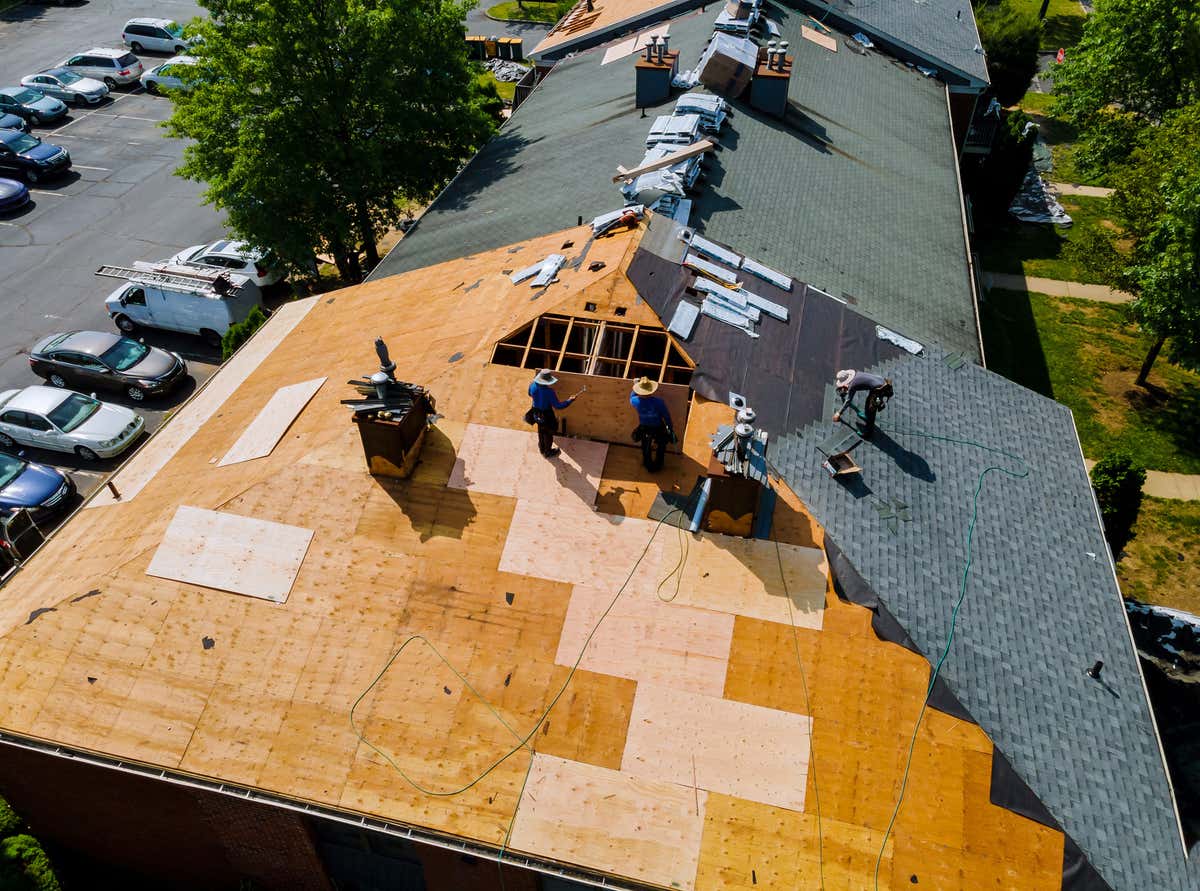Even the biggest homeowners insurance companies can’t insure every single home. There would be no way to pay claims if they did. So every company has underwriting guidelines that help them determine what homes and risks they will and won’t cover. Some homes that don’t fit these guidelines may be considered “high-risk homes,” and that can make them more complex to insure.
This guide helps explain some common hard-to-insure risks, how you can address them, and how you can find high-risk homeowners insurance if you need to.
6 things that can make homes hard to insure – and what to do about it
1. Your roof needs some love
If your roof has been patched or its shingles are deteriorating, it may be hard to find an insurer to cover your home, especially if you live in Florida where hurricanes are promised. Your roof is your first line of defense in protecting your home from strong storm winds. An old roof or a roof in disrepair might not provide the protection your home needs to weather the storm.
Usually, it may be time to replace your roof if it has:
- 3-tab or asphalt shingles and is older than 15 years.
- Architectural shingles and is older than 20 years.
- Clay tiles, concrete tiles, slate, or metal and is older than 40 years.
- A flat or shed shape and is older than 10 years.
- Wood shake or shingles or asbestos materials.
- Existing damage.
2. Your electrical panel needs an update
Older electrical systems can be a big fire and safety risk. Knob and tube wiring, for example, is usually ungrounded and can cause electric shocks. Some electrical panels, such as Federal Pacific, Stab-Loc, Zinsco, Challenger, and Sylvania, have been known to overheat and cause fires when circuit breakers trip.
Outdated or recalled panels may need to be replaced before an insurer will offer a policy.
3. Your home doesn’t have central heating or cooling
If you rely on wall or window AC units to cool your home, it could be a red flag for an insurance company. Wall AC units are prone to leaking in the wall, which can cause water and mold damage. Window units require the window to remain open, which creates a security risk.
Portable heating devices, such as space heaters and portable heaters, can increase your home’s risk of fire.
4. You have a big renovation in progress or your home is vacant
If your home is undergoing a major renovation and you can’t occupy it for months on end, it may be hard to get coverage until the work is complete. Similarly, many insurance companies won’t cover a vacant home that doesn’t have furniture or utilities.
If no one is around to keep an eye on things, an incident could go unnoticed for longer, which increases the severity of the loss. Think about it this way: if your kitchen catches fire while you’re around, you may have the opportunity to put it out or call the fire department right away. If your kitchen catches fire and you’re gone, the fire can spread and damage more of your home and belongings before help intervenes. Plus, an empty home is an easier target for theft.
5. You have an in-ground fuel or propane tank on your property
Because there’s no way for an inspector to verify the condition of an in-ground fuel or propane tank, these tend to give insurance companies pause. If a tank leaks into groundwater, it could be a liability issue. Essentially this risk is ineligible because it would be a big question mark on what insurers are agreeing to cover.
6. You run a home-based business
Many homeowners insurance companies don’t offer business insurance, which is the type of coverage you’d need to cover your home-based business’s property and risks. While home insurance includes some coverage for business property, like a laptop, the limits are usually too low to address all your needs. Businesses also usually mean increased foot traffic and liability.
High-risk homeowners insurance options
If you have a mortgage, you’re likely required to have home insurance. And if you’re struggling to find an insurer, there is an option worth exploring: your state’s Fair Access to Insurance Requirements (FAIR) plan.
If you’re in California or Florida, these are the numbers to call:
- California FAIR Plan Association: 213-487-0111
- Citizens Property Insurance Corporation: 866-411-2742
FAIR is a government-run program designed to make sure every homeowner has access to insurance. That said, it’s designed to be an option of last resort if you can’t find a private insurer. These plans may offer less coverage than a typical homeowners policy. Still, it’s a much better option than not having insurance, especially if you live in an area prone to wildfires and hurricanes.


